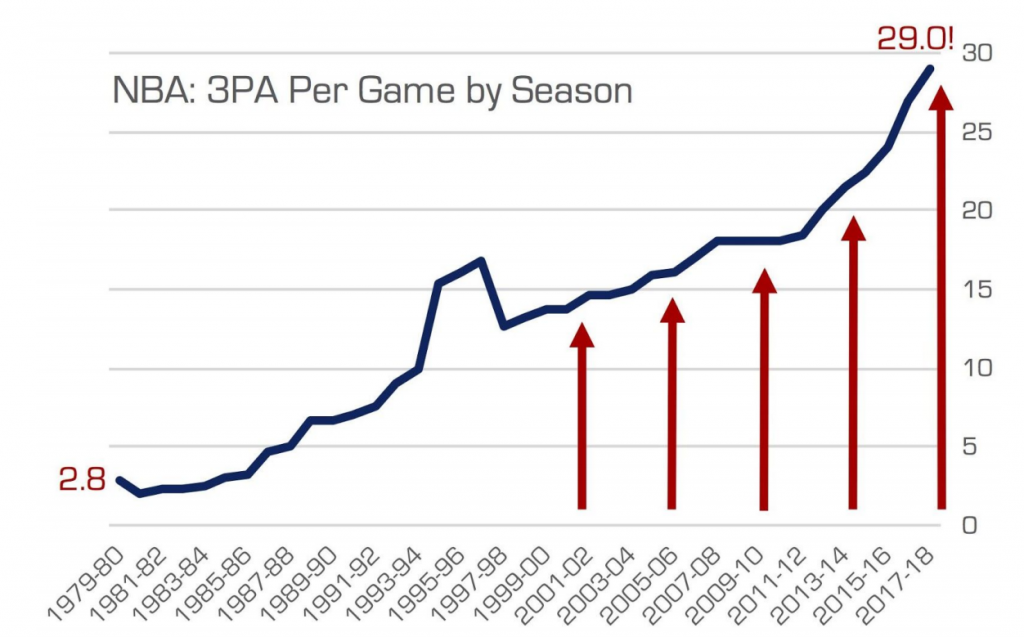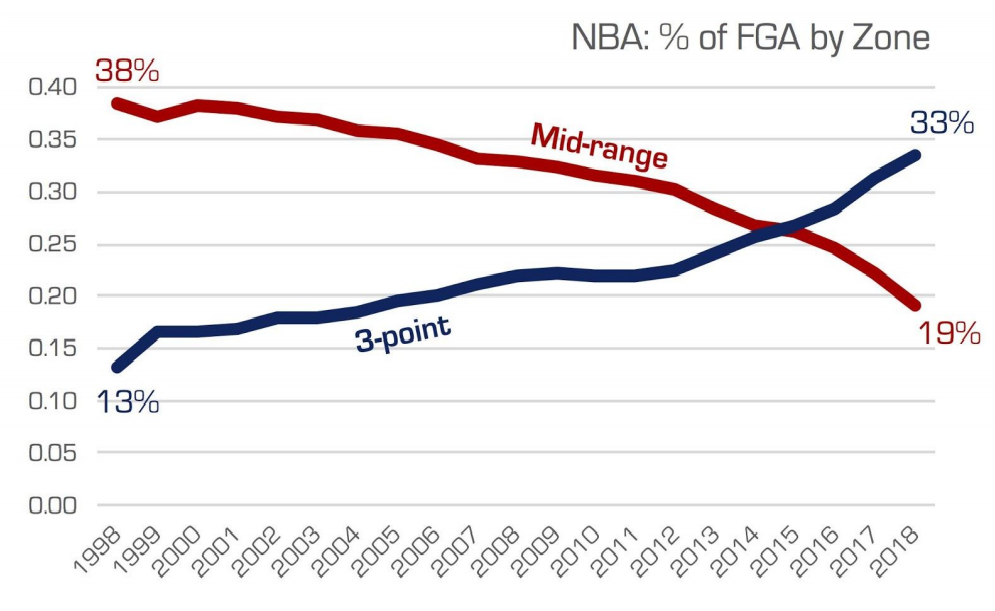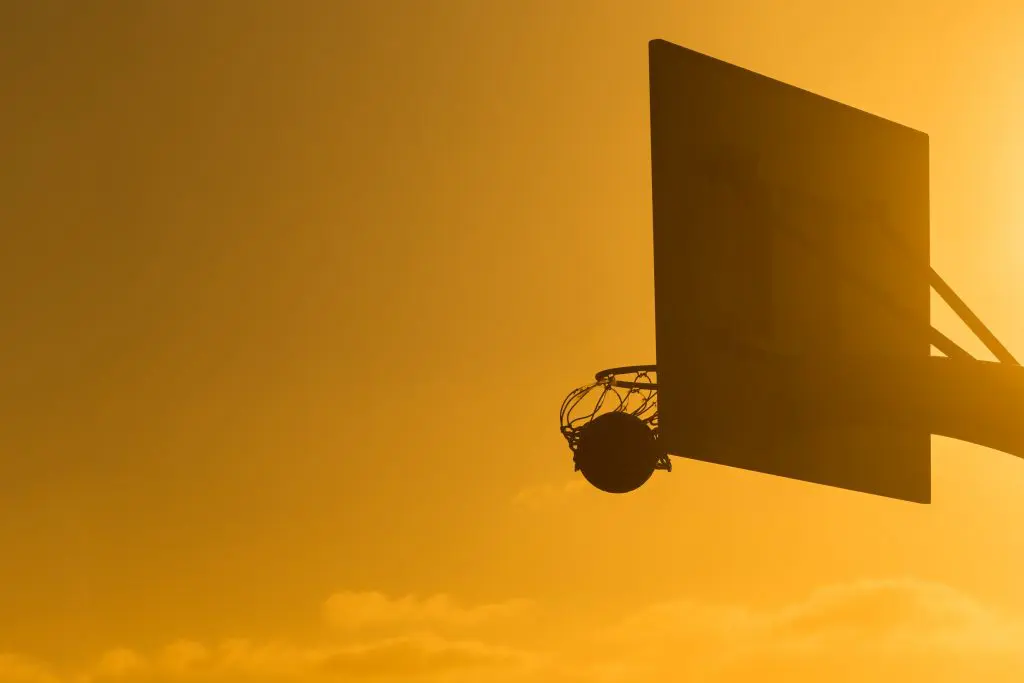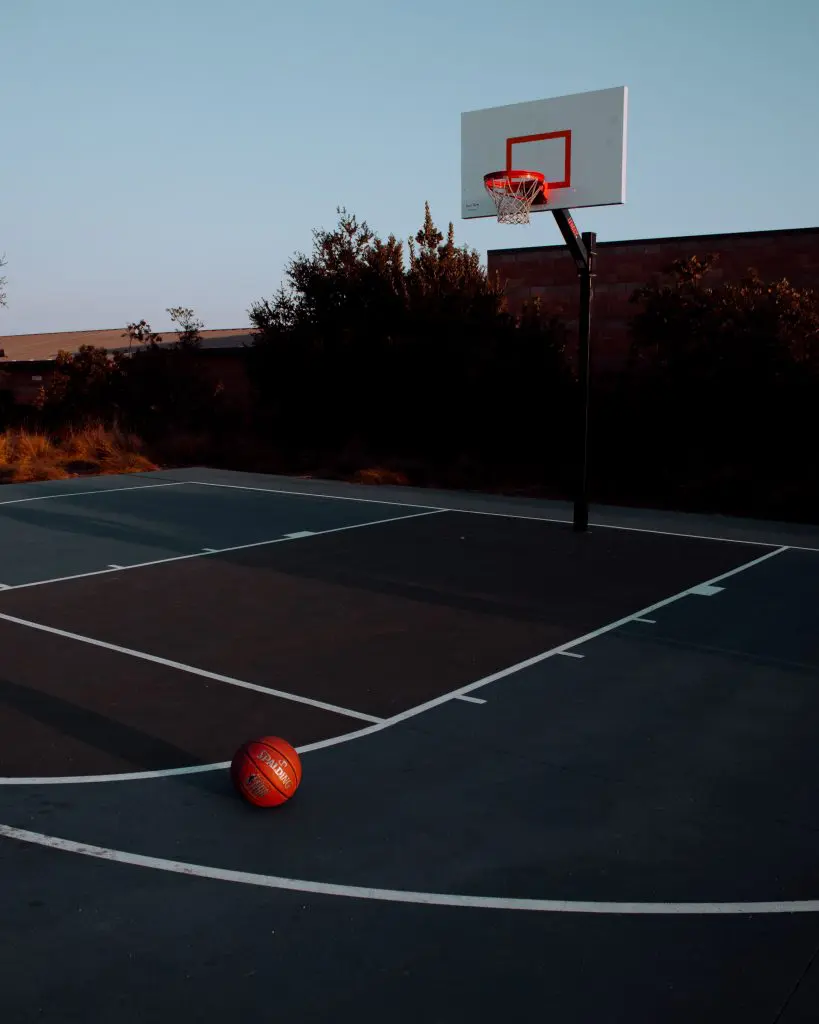How to Block a Three-Point Shot
The game of basketball is an inherently high-scoring sport. With an array of different shot attempts available on the court, a team playing offense has a number of scoring opportunities at their disposal. Yet perhaps the deadliest shot of all is the three-point shot.
The three-point shot, instituted in the NBA in 1979, has gradually grown in popularity. And with nearly 40% of all shots coming from behind the three-point arc, learning how to block a three-point shot is more important than ever before.
Below, we are not only going to discuss how to block a three-point shot but also how to play proper defense against the three-point shot. Doing so correctly will not only help your team to win more games but will also likely lead to an easy fast-break opportunity.
Why Has the Three-Point Shot Attempt Increased?
When the NBA first instituted the three-point shot in 1979, then Washington Bullets coach Dick Motta commented, “The three-point field goal will definitely make things interesting.”
Yet neither Coach Motta, nor anyone in the front office of the NBA, could fully predict the scope as to how much the game would change due to the addition of the three-point arc.
Although the three-point line was initially stigmatized, and even frowned upon, players would slowly grow accustomed to its placement. However, it would take some time for that to happen. In fact, it would take nearly ten-years for NBA teams to begin attempting more than ten three-point shot attempts per game.

However, in the current year, NBA teams are averaging nearly 30 three-point shot attempts per game. And this is simply due to the increased efficiency of attempting a three-point shot over a mid-range jumper within the arc. The three-point shot is a very efficient shot.
Within the past twenty years, NBA players have averaged 1.05 points from beyond the three-point line, excluding the corner three. From the corner three, the average jumps to a staggering 1.16. Contrasted to the two-point shot, NBA players have averaged just a mere .79 points per 2-point attempt.
In other words, for every 100 shot attempts, mid-range jumpers will net an NBA team 79 points, whereas shot attempts beyond the three-point line will net their team 105 points. Even factoring in for the increased difficulty of the three-point shot, the few additional missed shots will still lead to more points scored.

Will NBA Teams Decrease Their Use of the Three-Point Shot?
It is highly unlikely that any NBA team will begin to decrease their reliance on the three-point shot. As basketball, and so many other sports, have become increasingly reliant on analytics to finetune their offensive and defensive schemes, the numbers continue to suggest that a team that can attempt and execute on a three-point shot will inevitably win the game.
In fact, we predict that the three-point shot attempt will only increase in use moving forward.
For instance, the all-time great Michael Jordan attempted a mere 1,778 three-point shot attempts in his career, making 581 of those shots for an effective three-point shooting average of .33%.
Stephen Curry, one of the most prolific three-point shooters in the history of the game, has thus far attempted a staggering 6,674 three-point shot attempts, netting 2,884 of them.

However, many younger players of the game did not have an opportunity to watch Michael Jordan play in his prime. In fact, their understanding of the game and their views on its most efficient plays, comes from watching the likes of Stephen Curry, Luka Doncic, and other prolific and efficient three-point shooters.
And with the proliferation of the internet and video streaming services and social media services such as Instagram, Twitter, and TikTok, younger players of the game are more likely to see, and attempt to emulate, the likes of Stephen Curry, wherein the ability to score from deep beyond the three-point arc is prized.
How to Effectively Defend Against the Three-Point Shot
All this is to say that, for better or for worse, the three-point shot and its use in the NBA and minor leagues across the country will continue to increase. Therefore, it is more important than ever before to be able to effectively block and defend the three-point shot attempt.
However, it is important to note that blocking a three-point shot attempt is extremely difficult. Due to the high arc placed on the shot, a defender only has a limited window to effectively block or swat the ball from its trajectory. Past the initial window, the ball should follow a high arc, landing neatly within the rim of the basket.

In addition, blocking a three-point shot attempt is a high-risk endeavor. Due to the chance of fouling the shooting player, you will want to play defense in a more cautious manner and one in which you won’t incur a foul for.
Fouling a shooter attempting a three-point shot could result in a 4-point play, in the event that the shot attempt is successfully made. Always keep that in the back of your mind and while you should play aggressively, you don’t want to incur a foul during the play.
- Keep Your Hands Up – perhaps the single best way to defend against the three-point shot attempt is to simply keep your hands high above your head while playing defense. While keeping your body parallel to the opposing player, having your arms high in the air will force the shooting player to attempt a more difficult shot attempt. While you may not block the shot, forcing a more difficult shot will likely lead to a missed shot attempt.
- Block the Opposing Players Line of Sight – another great tactic is to block the shooting players line of sight. While difficult, you should attempt to block their view of the basket. This can either be done with your body or by placing a hand near their face as they are dribbling or preparing to take a shot. However, if you were to interfere with their shot attempt, you will be assessed with a foul. So do so carefully and in a manner that won’t incur a foul.
- Leave Little Room – similarly, when attempting to block or defend against a three-point shot, leave little room for the three-point shooter. If the shooter stops their dribble, you should play close one-on-one defense, leaving them with little room to pivot or setup their shot attempt.
- Don’t Jump into the Opposing Player – perhaps one of the biggest mistakes we see being made by defensive players is the attempt to block a three-point shot by jumping for the ball. However, rather than reaching the ball, the defending player accidentally jumps into the opposing player or their landing zone. Doing so will result in a foul call. Always attempt to contest the ball, not the shooting player.
